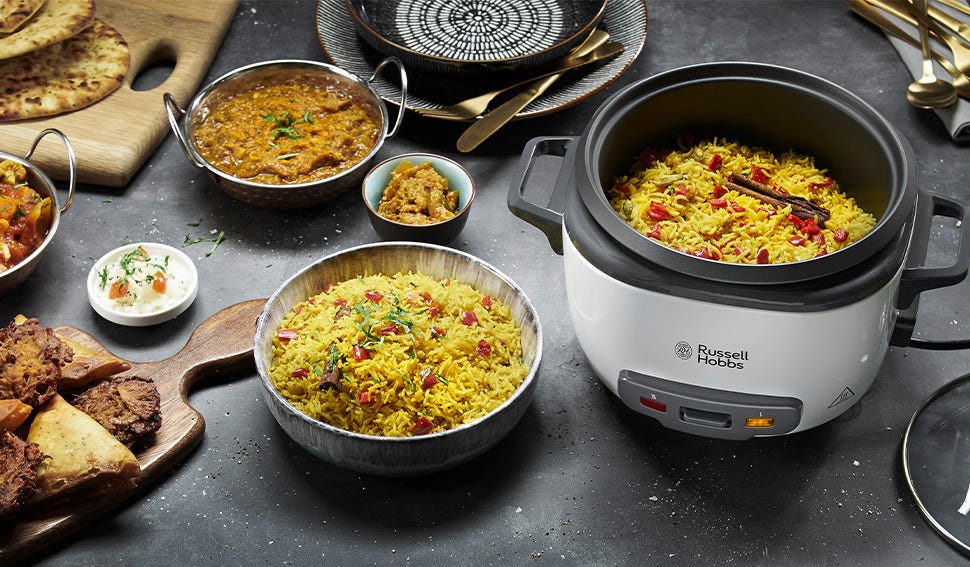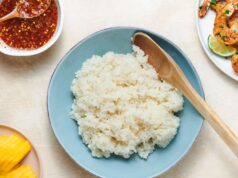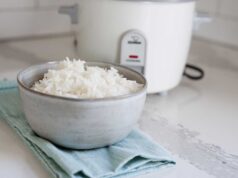If you’ve ever wondered how to cook rice without a rice cooker, you’re not alone. While rice cookers are beloved for their simplicity, they’re not always accessible. Today, we’ll dive deep into the art of cooking rice on the stove, using basic cookware you probably already own. With just a pot, heat source, and a little knowledge, you can make fluffy, delicious rice every time.
Making rice without a rice cooker isn’t just about convenience; it’s also a skill that connects you to the roots of traditional cooking methods practiced for centuries across cultures. Plus, this process offers more control over texture and flavor, which might just convince you to skip the rice cooker for good!
BBQ sauce tips can also pair perfectly with rice dishes!

What You Need to Get Started
Before we start the process of cooking rice, let’s ensure you have all the tools. Here are the essentials:
| Ingredients | Cookware |
|---|---|
| – 1 cup of white or brown rice – 2 cups of water – 1/2 teaspoon of salt – Optional: butter or oil for flavor |
– A medium-sized pot with a lid – Measuring cups – Wooden spoon – Cutting board (for seasoning prep) – Knife |
Important Notes on Selecting the Right Equipment
The choice of cookware makes a big difference when making rice without a rice cooker. If you don’t have a good pot, we recommend this high-quality rice cooker alternative or checking out a versatile mid-sized pot that works across various recipes.
Don’t forget to maintain your cutting board for longevity by using cutting board oil and selecting a reliable cookware cleaner to keep your pots looking new.
Step-by-Step Guide to Cooking Rice
Here’s a detailed explanation of how to cook rice on the stovetop:
1. Rinse the Rice
Place the rice in a strainer or bowl and rinse it under cold water until the water runs clear. This step removes excess starch, ensuring your rice won’t be overly sticky. Although some prefer skipping this step, it can make a noticeable difference in the final texture.
2. Measure the Rice-to-Water Ratio
For non-rice-cooker rice-making, precision is key. A standard ratio is commonly 1 part rice to 2 parts water. However, the type of rice you’re cooking also determines the quantity of water. For jasmine or basmati, 1:1.5 ratio typically suffices, while brown rice often needs more than 2 parts water.
3. Bring Water to a Gentle Boil
Using your pot, add the measured water, a pinch of salt, and optional butter or oil. Heat the mixture until it reaches a gentle full boil. This initial temperature shock is critical as it starts cooking the rice evenly from the beginning.
4. Add the Rice
Now that your water is boiling, gently add the washed rice. Stir it once or twice to ensure it doesn’t clump, then lower the heat to a simmer. This is the stage where you want to be extra careful with your temperature setting.
For more tips on flavoring your rice, check out this BBQ sauce guide which offers interesting pairing ideas.
5. Cover and Simmer
Immediately cover your pot with the lid, reducing the heat as low as possible for simmering. Let the rice cook undisturbed. Avoid lifting the lid too often. The steam is what cooks your rice thoroughly!
Cooking time varieswhite rice may take 1520 minutes, whereas brown rice requires closer to 45 minutes. Be patient and let the heat do its magic.
6. Check and Fluff
Once the water is mostly absorbed, remove the pot from heat and let it rest for another 10 minutes with the lid on. This step helps redistribute moisture evenly through the grains. Finally, fluff the rice with a fork to separate the grains for a lighter, airy texture.
Common Troubleshooting Tips
Too Much Water
If you find your rice watery even after full cooking, it likely means the ratio was off. You can save it by continuing to cook uncovered for a few minutes until the excess water evaporates.
Undercooked Rice
If your rice is hard in the center but dry, add a few tablespoons of boiling water and continue cooking for 5-10 minutes more.
Sticky or Overcooked Rice
This is usually caused by using the wrong ratio or insufficient rinsing. If your rice turns mushy, its still salvageable for other dishes like rice pudding or fried rice.
Enhance Your Rice-Eating Experience
Perfectly cooked rice can be used in endless recipesfrom savory stir-fries to comforting soups. If you’re planning to pair your fluffy rice with hearty BBQ flavors, be sure to explore these amazing pork chop ideas that combine techniques with flavorful enhancements.
Maintaining Your Tools for the Next Batch
Caring for your cooking tools ensures they’ll last longer and perform better. To keep your cutting board clean and sanitized, consider using a high-grade cutting board oil. For pots and pans, a gentle yet effective cookware cleaner will work wonders.

Final Thoughts
Learning how to cook rice without a rice cooker is not just a survival skill; it’s a rewarding practice that helps you appreciate the nuances of cooking. Whether you’re using it as a base for a protein-rich meal or dressing it up as a standalone dish, this method ensures your rice is always light, flavorful, and utterly satisfying. Next time you’re ready to experiment, why not explore our safe BBQ options for delicious inspiration?
Dont forget to share your experience and any tips youve discovered about cooking rice without fancy equipment in the comments below!
This article contains affiliate links. We may earn a commission at no extra cost to you.











